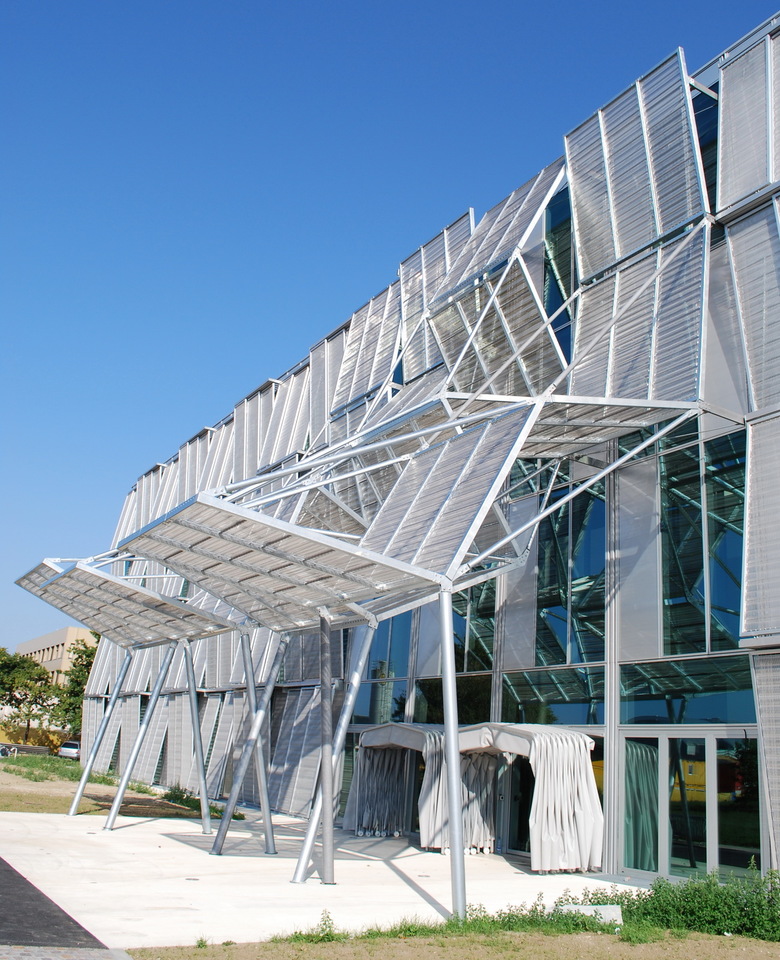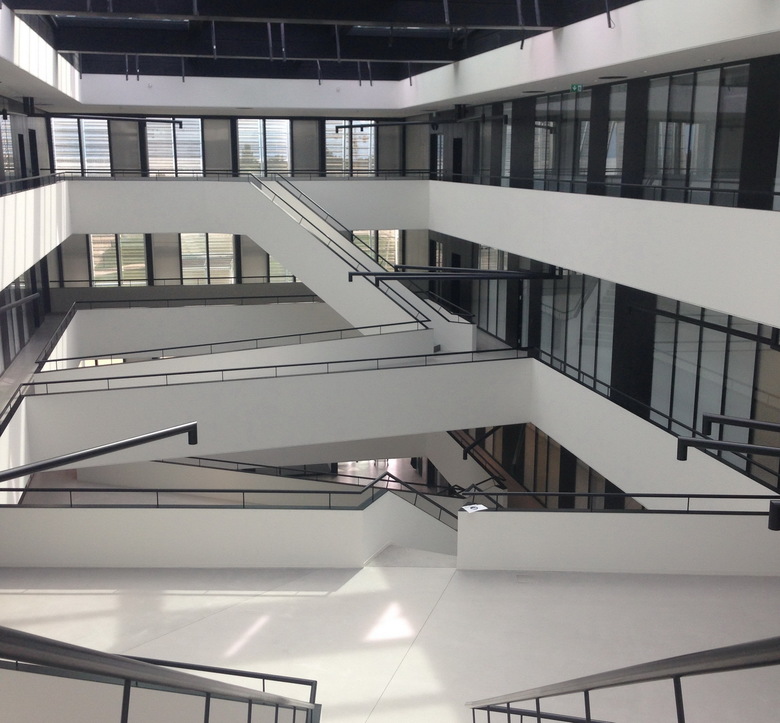EPFL's Zigzags
The campus of the Ecole Polytechnique Fédérale de Lausanne (EPFL) is known best for SANAA's Rolex Learning Center built in 2010. Dominique Perrault has just completed an adjacent building whose facade dissolves through the use of a custom, movable aluminum mesh.
Major universities are – as we often hear – in competition with each other to attract the best students and researchers from around the world. One factor in these efforts is architecture, since spectacular buildings can bring fame to a university's campus. It is no wonder then that so many universities hire well-known architects to decorate their campuses and provide buildings that are on everyone's lips. The world of architecture has talked for a good five years about the EPFL, where Japanese architects Kazuyo Sejima and Ryue Nishizawa (SANAA) contributed the Rolex Learning Center, a low, undulating building that metaphorically recalls lasagna or Swiss cheese, yet whose architecture justifiably creates very unique spaces and spatial relationships. This icon has been followed by others, including the Swiss Tech Convention Center by Richter Dahl Rocha & Associés, based in Lausanne, Japanese architect Kengo Kuma's Under One Roof project nearing competion, and French architect Dominique Perrault's conversion of the former central library into the EPFL's main administration center.
At the same time they were working on that conversion, Perrault's firm managed to win an invited competition for another project on the university campus, one that is located immediately adjacent to the SANAA building. Again, it is a conversion: the renovation and expansion of the former Institute of Mechanical Engineering into the Center for Neuroprosthetics (CNP), which focuses on the treatment of spinal cord injuries and the restoration of motor and sensory functions after amputations, as well as the sci-fi-like control of robots by thought.
Dominique Perrault's design for the CNP is a zigzag pattern that is felt both internally, in the raised walkways and stairs of the atrium, and outside, where it dominates the facade of the four-story building. The outer layer of the facade consists of 630 individual panels, each 1.10 x 3.60 m (3'6" x 11'9"), that are arranged as alternating convex and concave awnings. The mix of stationary, movable and motorized panels are made up of GKD's Escale mesh in natural anodized aluminum. The panels are attached in groups of three in a sturdy frame, where two motorized panels can slide behind the third. This offers great flexibility in terms of natural light, with each room able to open and close the mesh panels as needed.
One way to understand what is going on with Perrault's facade is as a response to SANAA's organically flowing neighbor. The 7 mm (1/4") wide and 150 mm (6") long mesh weave reflects sunlight and gives the compact building a certain lightness and undulation it might not otherwise have. In addition, the 2mm (1/16") flat wire used on the ground floor offers increased protection against vandalism. Here on the ground floor, the fabric "dress" is folded elaborately above the entrance as if blown by a gust of wind. Filigree struts and supports, on which the frames are secured, bear the forces from this canopy. Due to the location in the mountains and proximity to Lake Geneva, increased wind and snow loads led to the use of a stainless steel mesh for the canopy, while aluminum covers the rest of the attention-getting facade.
Published originally as "Auf Zickzack" on German-Architects.
PROJECT DETAILS
Project
Ecole Polytechnique Fédérale de Lausanne (EPFL)
Lausanne, Switzerland
Architect
Dominique Perrault Architecture
Paris
In collaboration with
Steiner AG
Zürich
Manufacturer
GKD – Gebr. Kufferath AG
Düren, Germany
Product
Metallgewebe Typ Escale
Client
Swiss Confederation, vertrten durch den Conseil des écoles polytechniques
Lausanne
Facade Engineer
Felix Construction
Denges, CH
Structural Engineer
Daniel Willi SA
Montreux, Switzerland
Site Area
15.500 m²
Floor Area
20.800 m²
Completion
2015
Planned Opening
May 2016
Photographs
Adagp
Dominique Perrault
GKD






